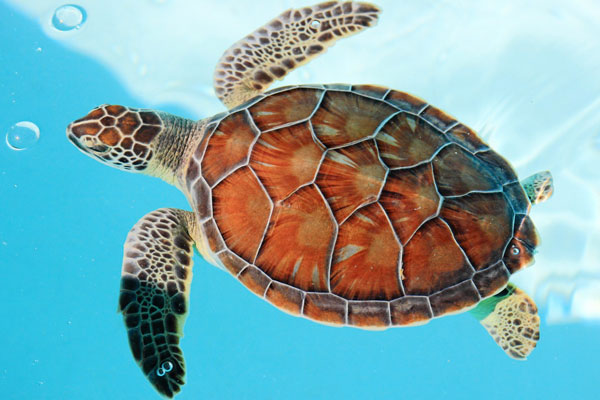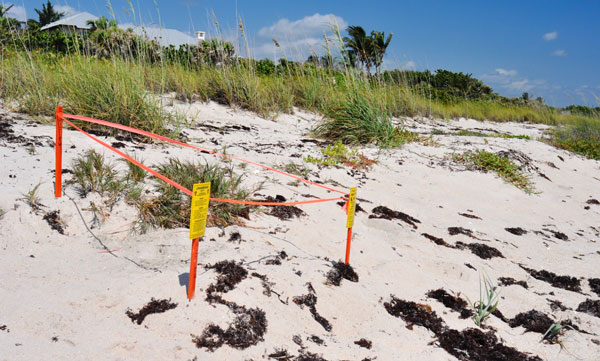Sea turtles, ancient mariners of our oceans, face numerous threats that have left many wondering about their survival. Growing concerns about their endangered status spark questions and the need for collective action. In this blog post, we will explore the critical reasons why sea turtles are endangered and the proactive steps we can take to protect these remarkable creatures.

Why Are Sea Turtles Endangered?
Sea turtles are under threat for several reasons, making their chances of survival increasingly slim. Here are the main factors contributing to the endangered status of sea turtles:
Habitat Loss: Coastal development, including construction and tourism, disrupts nesting sites. Without safe places to lay eggs, the chances of hatchlings surviving dwindle significantly.
Pollution: Pollution, particularly plastic waste, has a devastating impact. Turtles often mistake plastic bags for jellyfish, leading to ingestion that can be fatal. Oil spills and chemical pollutants also degrade their habitats.
Climate Change: Rising global temperatures affect sea turtle populations in numerous ways. For instance, the gender of sea turtle hatchlings is temperature-dependent, and warmer sand produces more females, skewing sex ratios. Additionally, climate change leads to habitat loss through rising sea levels.
Fishing Practices: Bycatch, where turtles get caught in fishing gear meant for other species, is a significant threat. Longlines, trawls, and gillnets ensnare and often drown these air-breathing creatures.
Illegal Trade and Poaching: Despite regulations, illegal hunting for turtle shells, meat, and eggs persists. This trade drastically reduces turtle numbers, impairing population recovery.
Predation by Invasive Species: Non-native predators introduced by humans, such as certain mammals and birds, prey on turtle nests. This predation further lowers the survival rate of hatchlings.
Overall, the reasons behind sea turtles’ endangered status are manifold and interconnected, necessitating a multi-faceted approach to conservation.
What to Do to Protect Sea Turtles?
Protecting sea turtles requires concerted efforts from individuals, communities, and governments. Here’s what can be done to help:

Reduce Plastic Use: Minimizing plastic consumption and properly disposing of waste can significantly decrease the amount of plastic entering oceans. Simple changes, like using reusable bags and bottles, go a long way in reducing pollution.
Support Conservation Programs: Donating to or volunteering with organizations dedicated to sea turtle conservation can make a tangible difference. Many programs focus on protecting nests, rescuing injured turtles, and restoring habitats.
Advocate for Marine Protected Areas: Marine Protected Areas (MPAs) preserve critical habitats and mitigate threats like fishing and pollution. Supporting policies that establish and maintain MPAs is crucial.
Use Turtle-Friendly Fishing Gear: Promoting the use of turtle excluder devices (TEDs) and other turtle-friendly fishing practices can reduce bycatch deaths.
Participate in Beach Clean-ups: Organizing or joining beach clean-ups helps remove harmful debris from sea turtle habitats. Clean beaches also provide safe nesting grounds.
Educate and Raise Awareness: Public education campaigns informing people about the plight of sea turtles and how they can help are vital. Awareness can shift behaviors and garner support for protective measures.
Enforce Anti-Poaching Laws: Stronger enforcement of regulations against illegal poaching and trade of sea turtles ensures these animals are protected from human exploitation.
Simple lifestyle changes, community involvement, and supportive policies collectively yield powerful results in the fight to protect sea turtles.
Conclusion
Sea turtles are enduring significant challenges that jeopardize their survival. However, awareness and collective action can lead to meaningful change. By understanding the threats and taking decisive actions to mitigate them, we can ensure that these majestic creatures continue to grace our oceans for generations to come.
FAQs
How many species of sea turtles are endangered?
Currently, six of the seven species of sea turtles are listed as endangered or vulnerable. This includes the Leatherback, Loggerhead, Kemp’s Ridley, Olive Ridley, Green, and Hawksbill turtles.
Can sea turtles be saved?
Yes, sea turtles can be saved through concerted conservation efforts, such as protecting habitats, reducing plastic pollution, and enforcing anti-poaching laws. Public awareness and community involvement are crucial for their survival.
What is the most endangered sea turtle?
The Kemp’s Ridley sea turtle is considered the most endangered species. Intensive conservation efforts are underway to protect this critically endangered turtle, focusing on its nesting sites and reducing bycatch in fisheries.


